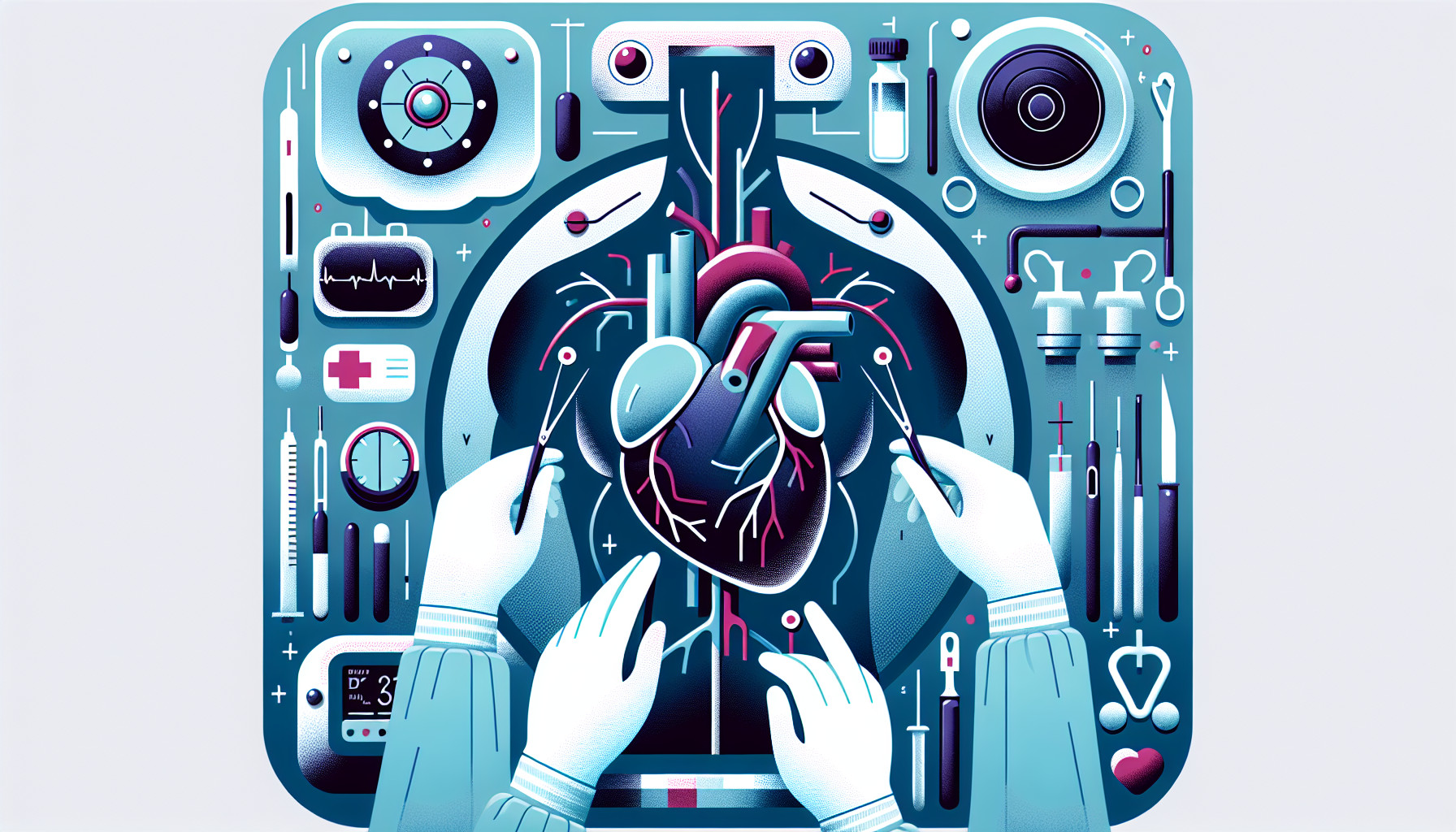Our Summary
This research paper is looking at the outcomes of two different types of heart surgery in patients aged 70 or older. The two types of surgery are bilateral internal thoracic artery grafting and coronary artery bypass grafting with a single internal thoracic artery and either a saphenous vein graft or a radial artery.
The study found that certain health conditions were less common in the group who had the bilateral internal thoracic artery grafting compared to the other two groups. These conditions included being female, having diabetes, needing emergency surgery, and chronic obstructive pulmonary disease. However, congestive heart failure and recent heart attacks were more common in the bilateral internal thoracic artery grafting group.
The surgery-related death rate and infections at the wound site were not significantly different between the groups. However, the group that had the saphenous vein graft had noticeably lower survival rates at the 10-year mark than the other two groups. Having a saphenous vein graft was also linked to a lower overall survival rate.
The researchers conclude that the study supports the use of arterial grafts in older patients who need coronary artery bypass grafting.
FAQs
- What types of heart surgeries were examined in this research paper?
- What health conditions were found to be less common in the group who had bilateral internal thoracic artery grafting?
- What conclusions did the researchers draw from the study regarding the use of arterial grafts in older patients?
Doctor’s Tip
A helpful tip a doctor might tell a patient about coronary artery bypass surgery is to discuss with their healthcare provider the option of using arterial grafts, such as the internal thoracic artery, instead of veins for better long-term outcomes. It is important to consider all options and factors, including age, health conditions, and surgical risks, before making a decision on the type of graft to use.
Suitable For
Specifically, patients who are recommended for coronary artery bypass surgery typically have significant blockages in their coronary arteries that are causing symptoms such as chest pain (angina) or shortness of breath. These blockages can be detected through diagnostic tests such as coronary angiography.
Other factors that may indicate a need for coronary artery bypass surgery include:
- Previous heart attacks or episodes of unstable angina
- Failure of medical therapy to manage symptoms
- Multiple blockages in the coronary arteries
- Left main coronary artery disease
- Diabetes
- Poor heart function (ejection fraction less than 40%)
- Severe blockages in specific arteries that supply critical areas of the heart muscle
Ultimately, the decision to recommend coronary artery bypass surgery is made on a case-by-case basis by a multidisciplinary team of healthcare providers, including cardiologists, cardiac surgeons, and other specialists. The goal of the surgery is to improve blood flow to the heart muscle, relieve symptoms, and reduce the risk of future heart events.
Timeline
Before the surgery:
- Patient undergoes various tests and evaluations to determine the need for surgery and assess their overall health
- Patient may be advised to make certain lifestyle changes, such as quitting smoking or losing weight, to improve outcomes
- Patient is informed about the risks and benefits of the surgery and given time to ask questions and make an informed decision
During the surgery:
- Surgeon will make an incision in the chest and connect the new blood vessels to bypass the blocked or narrowed arteries
- Surgery typically takes several hours and patient is placed on a heart-lung machine during the procedure
- After the surgery is completed, patient is taken to the recovery room for monitoring
After the surgery:
- Patient will be closely monitored in the hospital for several days to ensure proper healing and recovery
- Patient will be given medication to manage pain and prevent infection
- Patient will be advised on post-operative care, including wound care, physical activity restrictions, and follow-up appointments
- Patient will participate in cardiac rehabilitation to help improve heart health and overall recovery
Long-term outcomes:
- Patient will continue to be monitored by their healthcare team to assess the success of the surgery and manage any potential complications
- Patient will be advised on lifestyle changes, such as diet and exercise, to maintain heart health
- Patient may need to take medication to manage heart disease risk factors, such as high blood pressure or high cholesterol
- Patient may need additional procedures or interventions in the future to address ongoing heart issues.
What to Ask Your Doctor
Some questions a patient should ask their doctor about coronary artery bypass surgery include:
- What are the benefits of bilateral internal thoracic artery grafting compared to coronary artery bypass grafting with a single internal thoracic artery and either a saphenous vein graft or a radial artery in older patients?
- How does my age and health conditions, such as diabetes, congestive heart failure, and recent heart attacks, affect the choice of surgery for me?
- What are the risks and complications associated with each type of surgery?
- How long is the recovery time for each type of surgery?
- What is the long-term prognosis for each type of surgery, especially in terms of survival rates?
- Are there any alternative treatment options to consider?
- Will I need any additional procedures or medications after the surgery?
- How often will I need follow-up appointments and monitoring after the surgery?
- Are there any lifestyle changes or precautions I should take after the surgery to improve my outcomes?
- Can you provide me with more information or resources to help me make an informed decision about my treatment options?
Reference
Authors: Medalion B, Mohr R, Ben-Gal Y, Nesher N, Kramer A, Eliyahu S, Pevni D. Journal: J Thorac Cardiovasc Surg. 2015 Sep;150(3):607-12. doi: 10.1016/j.jtcvs.2015.06.032. Epub 2015 Jun 26. PMID: 26190661
